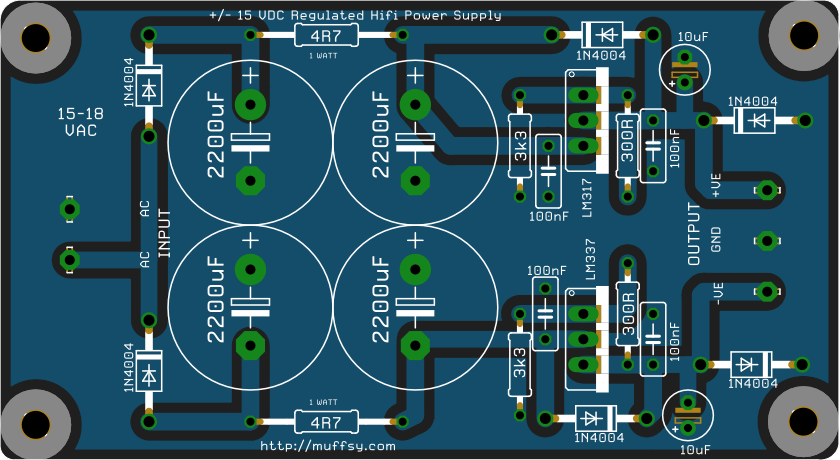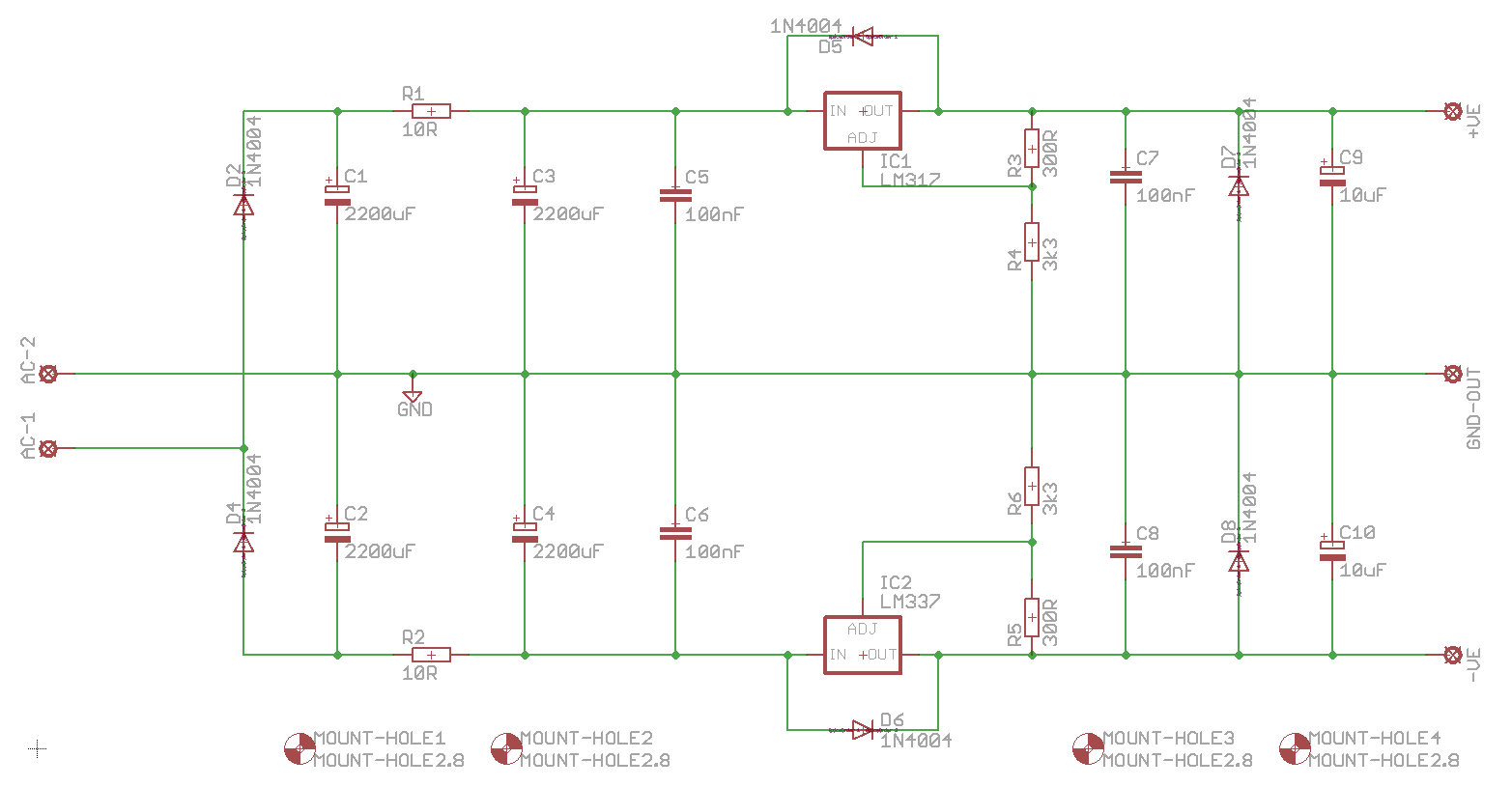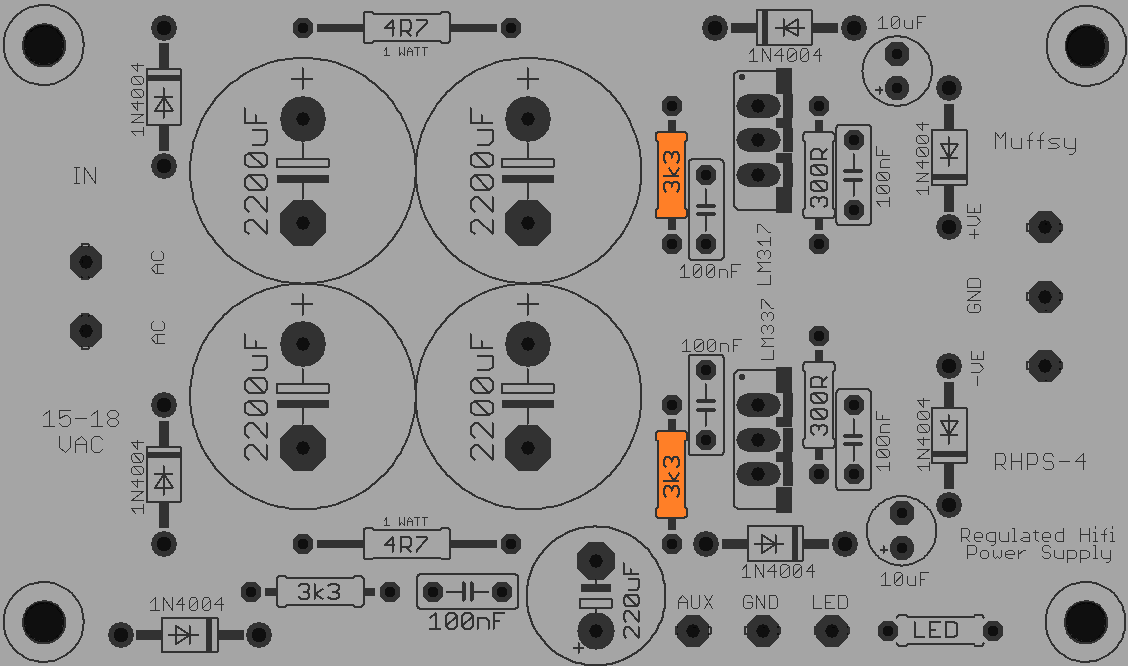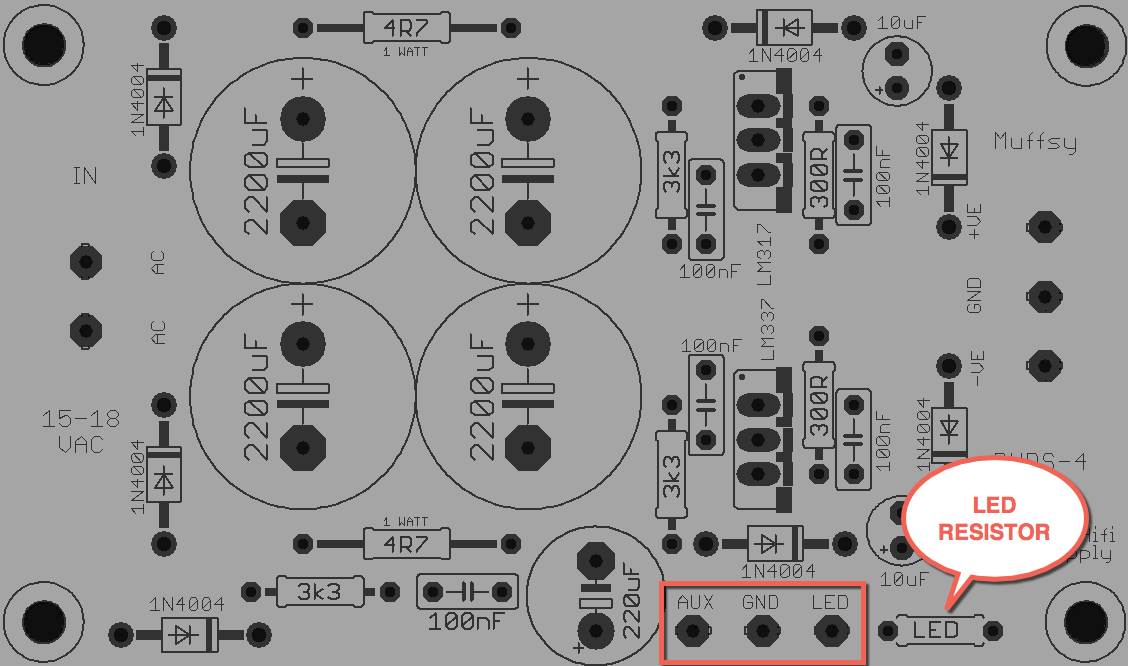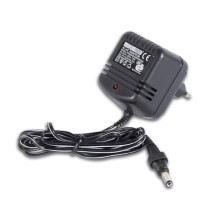-
Make Your Own Muffsy Power Supply
07/15/2016 at 07:29 • 0 commentsA few things have happened to this project since I last updated it, but they've never really made it to hackaday.io. Jump over to http://muffsy.com for the latest info.
I'm writing this project log because I have a treat for you. Gerbers (for ordering PCBs) and PDFs (for etching your own) are now available: http://www.muffsy.com/blogs/post/Make-Your-Own-Muffsy-Power-Supply/
![]()
Granted, it's lacking the AUX power. You'll want to get the kit for that. The board is also single layer so that it will be easier to etch. And it really is easy to etch, as only the tiny black areas (see below picture) need to be etched away.
Please note that the gerbers and PDFs are released for personal, non-profit use only.![]()
-
Muffsy has a New Home (page)
07/14/2015 at 14:40 • 1 commentAfter a long time, spreading the efforts between Hackaday.io, Instructables and Tindie, Muffsy now has a home. There's still some way to go, but all the information that was spread around will become available at this new home page.
Here it is: http://muffsy.com
-
Schematic
05/27/2015 at 12:36 • 0 commentsHere's the schematic for the power supply, should you want to build it on breadboard:
![]()
Click on the picture to view the high resolution version.
Note: The AUX power is not shown on this schematic.
-
Change the Output Voltage
05/22/2015 at 13:37 • 0 commentsThe output voltage of this power supply can be changed to suit your needs. Let's have a look at how this can be done, and how to make sure that your transformer is able to deliver sufficient voltage.
Here's the layout of the printed circuit board. There are only two resistors that need to be replaced to change the output voltage, and they are shown here in orange:
![]()
With the resistors at 3300 ohms, the power supply will deliver +/-15 volts.
Resistor Values
You might want less than this. Let's say +/-12.5 volts. Or more, for instance +/-17.5 volts. These output values are well within reach using the recommended 15-18VAC wall adapter.
This table will give you the resistor values for 12.5, 15 and 17.5 volts dual output:
Resistor, ohms Output voltage, +/- volts 2.700 (2k7) 12.5 3.300 (3k3) 15.0 3.900 (3k9) 17.5 Other output voltages are easily obtainable, just use a calculator such as this one. The R1 value to provide in the calculator is 300 ohm.
Wall Adapter Voltage
The PSU needs a higher input value than the desired output value. Then how can a 15 volt AC-adapter be sufficient for 17.5V output? The answer to this is that the rectified DC voltage will be higher than the AC input voltage by a factor of 1.41. Now, there is some loss in the diodes. To be on the safe side, we'll use the factor 1.3 instead:
- 15V * 1.3 = 19.5V
This is more than 17.5 volts, and you are in the clear!
So what is the lowest AC voltage needed for a 15V supply?
- 15V / 1.3 = 11.54V
You could actually use a 12V AC-adapter. But, there is the possibility that an adapter rated at 12V will give less than that. Stick with 15V or more, and you will be sure that your PSU works as expected.
-
AUX Power - How and Why
05/08/2015 at 07:51 • 0 commentsThis power supply will give you about 100 mA of regulated power, add heat sinks and you will double that.
Given that the regulated power is a limited resource, wouldn't it be nice to cram some extra juice out of this power supply?
![]()
Notice at the bottom right corner, there are three pads called AUX, GND and LED.
This is the auxiliary DC power.
- It is unregulated at about 20-23 volts
- It will provide about 500 mA, depending on your transformer
- It is filtered, but not at the same degree as the regulated supply
You can use this for any additional devices that needs DC power. There is also space for a resistor, called LED.
AUX Power
For anything that needs DC power, connect AUX and GND (positive and negative connections).
Connect an LED
There is space for an on-board current limiting resistor for LEDs. Add a suitable resistor and connect your LED to the connections LED and GND.
(It is usually safe to assume that the forward voltage drop of your LED is 2 volts, and that the maximum forward current is 20 mA.)
-
Suitable AC to AC Wall Transformers
05/08/2015 at 06:24 • 0 comments![]()
These AC to AC wall transformer are suitable for use with this PSU:
120V Input:
230V Input:

